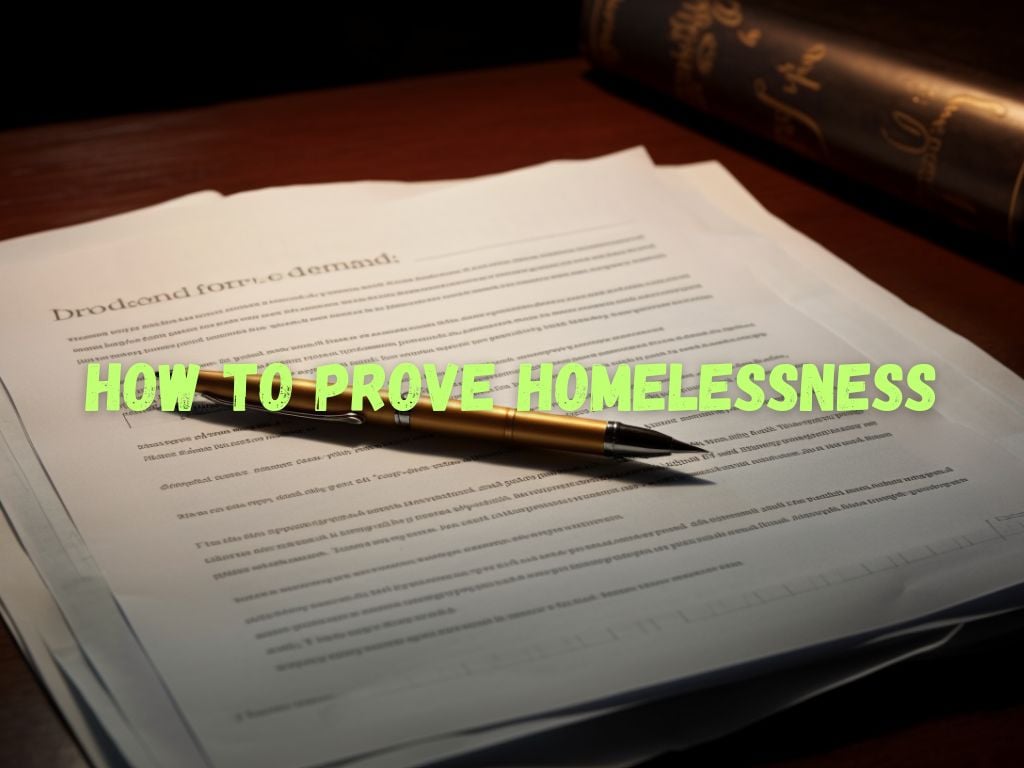Homelessness is a pressing issue that affects millions of individuals worldwide. For those experiencing homelessness, obtaining proof of their situation is crucial for accessing various social services and assistance programs.
This comprehensive guide aims to provide a step-by-step approach to acquiring the necessary documentation to prove homelessness.
Definition of Homelessness
Homelessness is a condition in which an individual lacks a fixed, regular, and adequate nighttime residence.
This includes sleeping in emergency shelters, transitional housing, or public places not designated for regular sleeping accommodations.
Importance of Proof of Homelessness
Accessing Support Services
Having proof of homelessness is vital for accessing support services, such as emergency shelter, healthcare, food programs, and public housing assistance.
These services are designed to offer immediate relief to those in need and help them transition out of homelessness.
Qualifying for Government Benefits
Proof of homelessness is essential in qualifying for specific government benefit programs aimed at lifting individuals out of homelessness.
For example, programs administered by the U.S. Department of Housing and Urban Development (HUD) require documented proof of homelessness to determine eligibility for housing assistance.
Advocacy and Awareness
Accurate documentation of homelessness helps raise awareness about the widespread issue and can influence policymakers to allocate more resources into combating homelessness.
By sharing data, facts, and personal stories, individuals and organizations can advocate for better support and social change.

Documentation Options for Homelessness
When it comes to demonstrating homelessness, different organizations and programs may have specific documentation requirements.
The following are common options:
Acceptable Documentation for HUD Programs
Letters from Shelter Providers
HUD accepts letters from shelter providers confirming an individual’s stay at the facility. These letters should include dates of residency and any additional information about the person’s situation that the shelter can provide.
Letters from Social Workers or Outreach Workers
Social workers or outreach workers who have interacted with the individual can also provide documentation.
These professionals may be affiliated with shelters, community organizations, or government agencies.
Alternative Forms of Documentation
In situations where traditional documentation is not available, alternative options can be explored. Here are a few of the options:
Evidence of Living in Public Spaces
In cases where traditional documentation is not available, individuals can gather evidence of residing in public spaces.
This may include photographs of the individual in public areas, along with testimonies from witnesses who can confirm their living situation.
Official Records of Shelter Stays
If an individual has stayed in a shelter that does not provide letters or documentation, official records of shelter stays can be requested from the shelter management or administration.
Letters from School Officials
For individuals experiencing homelessness and still attending school, letters from school officials can affirm their living situation.
These letters should describe the circumstances and challenges the student faces due to homelessness.
Certification of Homelessness
Certification serves as an official recognition of an individual’s homeless status and can often be obtained through:
Certification Process for Emergency Shelters
For individuals residing in emergency shelters, the facility staff can provide a certification letter confirming their status as a shelter resident. This documentation is widely recognized and accepted as proof of homelessness.
Certified Homeless Directly from the Street
In situations where individuals are unsheltered and have no access to formal emergency shelters, outreach workers or social service agencies can provide certifications based on their professional assessment.
These certifications carry weight in verifying someone’s homelessness.

How to Prove Homelessness for Social Services
To access a range of social services including Social Security benefits and public housing, valid proof of homelessness is required. Here’s a detailed guide on how to prove homelessness with easy to access the benefits.
Proving Homelessness for Social Security Benefits
To qualify for Social Security benefits due to homelessness, individuals need to provide documentation from a shelter or social service agency confirming their current homeless status.
This documentation strengthens their claim, and increases the chances of receiving necessary assistance.
In some cases, medical records and statements from healthcare professionals who have treated individuals experiencing homelessness can be used as supporting evidence for Social Security benefits.
Documenting Homelessness for Public Housing
Public housing authorities often require evidence of homelessness before granting housing assistance.
Individuals can obtain letters from social service agencies or organizations that work with the homeless community, confirming their homeless status and need for housing.
If individuals have stayed in emergency shelters, they can provide documentation or signed statements from the shelter to demonstrate their homelessness.
Personal Testimony/Signed Statements
In cases where formal documentation is difficult to obtain, personal testimony or signed statements can serve as admissible proof of homelessness.
Personal Testimony by the Individual
Individuals can provide a detailed personal account of their living situation, including places they have stayed and the challenges they have faced due to homelessness.
Sharing this experience and explaining the hardships encountered can help validate their homeless status.
When sharing personal testimony, it is important to provide specific details, such as dates and locations, to enhance credibility.
Signed Statements from Supporting Organizations
Service providers, healthcare providers, and outreach programs can provide signed statements supporting an individual’s claim of homelessness.
These organizations have professional interactions with homeless individuals, making their statements carry significant weight.
Statements from reputable organizations and experts in the field of homelessness can lend credibility to an individual’s claim, especially in situations where traditional documentation may be lacking

Frequently Asked Questions
What documentation is acceptable for HUD programs?
Acceptable documentation for HUD programs includes letters from shelter providers, social workers, outreach workers, and signed statements from individuals with knowledge of an individual’s living situation.
How can I certify that I am homeless?
Certification can be obtained through emergency shelters or outreach workers who can provide an official letter verifying an individual’s homeless status.
What personal information is needed to provide proof of homelessness?
To provide proof of homelessness, individuals may need to disclose their personal information such as name, address, birthdate, and supporting details about their living situation.
Can homelessness be verified by a friend or family member?
While personal testimony from a friend or family member may carry some weight, formal documentation from shelters or recognized organizations is more likely to be accepted.
What if I can’t provide proof of homelessness?
If unable to provide traditional proof, alternative options such as photographic evidence, official records of shelter stays, or letters from school officials may be explored.
Conclusion
Obtaining proof of homelessness is essential for individuals seeking assistance and social services.
By understanding the various forms of documentation and certification processes available, individuals can effectively navigate the system and access the support they need to exit their homeless situation.
Remember, each organization or program may have specific requirements, so it is advisable to consult them directly for precise guidelines to ensure a smooth process.


 Tags:
Tags:










